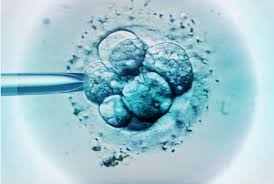Source: health.economictimes.indiatimes.com
At its core, artificial intelligence (AI) is “a partnership between man and machine” (Ginni Rometty, IBM CEO). The embodiment of AI is a computer program that can learn to execute tasks involving forms of intelligence normally ascribed to humans. How well a computer will be able to emulate or exceed humans is the essential question driving AI technology.
The potential introduction of AI into the clinical ART world holds both tremendous benefits of high success rates as well as lower costs. The current use of AI to separate high- quality embryos from those that are chromosomally abnormal is expected to save healthcare professionals time and effort by processing and interpreting more data with greater depth and precision. This might, in turn, improve the efficiency of ART and subsequent pregnancy outcomes, treatment options and care for patients with infertility.
The present Infertility lab hasn’t changed since the invention of Intracytoplasmic Sperm Injection (ICSI) in the late 1980’s. There have been some improvements in technology over the last few decades specially in Vitrification, but the current processes have a large amount of subjectivity built into them, thus there is an enormous amount of variance between different experts that that lead to large amounts of inconsistency in results.
Typically, a process that has inheriting inconsistencies because of human error are fit for disruption by Artificial intelligence. In other words, if the Artificial intelligence tool can perform as good as the best expert; that is already a huge jump in getting consistent results. Further, as the AI gathers more data over time, it can even beat human results.
A lot of tools are being developed around the world to use artificial intelligence and machine learning to predict embryo quality. These are extremely helpful in increasing the success rate per embryo transfer. However, the variability and subjectivity could be in the following steps: ovarian stimulation protocols and dosing, the mechanical steps during egg retrieval and oocyte preparation for fertilization, the mechanics of sperm preparation, the variations in technique for sperm injection (ICSI), culturing, embryo manipulation and biopsy, embryo selection, and finally the embryo transfer, and it’s difficult to pinpoint failures to any one of these steps.
The technology of IVF, four decades after the first IVF baby was born, is largely measured by a single outcome: live birth. Therefore, in order to make a big change in the success rates of the infertility treatments, a wholistic approach in automation is required in multiple steps (if not all the steps).
It is a given that the way forward for infertility is to use artificial intelligence and deep learning models to improve outcomes. However, collecting data in a disciplined and a consistent way remains a challenge. Today since almost everything is done manually by embryologists, high quality digital data is not collected. The infertility lab data has traditionally been pretty much black box for most clinic management. At Aveya, we have been collecting data in a consistent manner and that has allowed us to understand the process and given us a sense on how to move forward with different pieces of the technology that can lead to improvement of the final endpoint.
